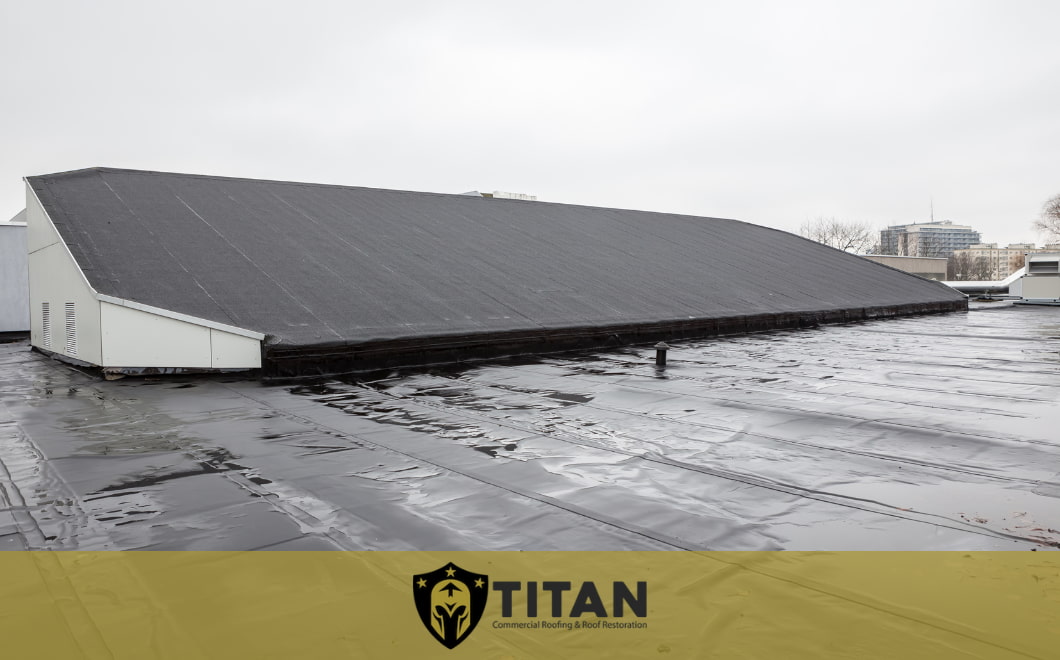Potential damage to equipment. Disruptions in the operations. Low employee morale. No, this isn’t just the description of an earthquake or a tornado. This is also the description of a leaky roof. As absurd as that might sound, without proper commercial roof maintenance, you’re looking at a small-sized disaster on your premises that unfolds slowly and without making a noise.
No matter how good you are in your business growth decisions, if you’re not swift and decisive when it comes to roof damage, you’re looking at a heavy price to pay. So, with that in mind, let’s look at what to do if your commercial roof is leaking. Of course, what you should do pronto is to call a roofing company that’s reliable. But there’s more to it.
Safety First
A leaky roof can be more than an inconvenience – it can pose some serious risks. Any commercial roofer in Jackson worth their salt will tell you that you’re better off evacuating than grabbing that bucket and mop. Here’s an overview of how to protect yourself and others:
- Get everyone out from under the leak. Waterlogged ceilings can collapse sooner than you think. And falling debris, needless to say, can cause some serious injuries. Clear the area and make sure everyone’s safe.
- Next, you want to power down your facility. Before a commercial roofing contractor gets there to assess the structural damage, you have to disconnect all wires. Water and electricity don’t like each other. And if the leak is anywhere near electrical equipment, lights, or outlet, turn off the power to that area immediately.
- If you have any ideas about taking the trip to the roof to assess the damage or do any temporary patching on your own, be super cautious about it. No matter how much experience you have with DIY roofing, every situation is different. It’s not like you repair roof leaks on a daily basis.
Containment: How to Minimize Water Damage
Of course, you cannot do proper commercial roof maintenance on your own. But what you can do (in some cases and only after proper deliberation) is some temporary containment. If you do feel that it’s going to be safe for you to try a little containment to avoid further damage or a safety issue, such as water possibly collecting into a pool and leading to more damage, then here are your immediate options:
- Place buckets and containers under the leaks. Collecting the dripping water is the #1 priority so it doesn’t overflow uncontrollably. If you don’t have many containers, you can try emptying trash bins and using them instead. You might want to focus on areas that house valuable equipment, electronics, or any sensitive inventory.
- Next, use heavy-duty tarps or plastic sheeting to create a barrier over any inventory or machinery that’s valuable. When you do this, it’s always a good idea to cover an extended area to avoid stray drips and splashes from getting in.
- In some cases, it’s possible to create a temporary channel or gutter using plastic sheeting or rolled-up towels. This can divert water away from sensitive areas, where it can get collected or preferably, taken out of the building altogether.
- If you’re not collecting the water, make sure it’s falling on a soft surface that absorbs water. Towels, clothes, paper rolls, etc. Also, if you have additional containers to spare, you can make a boundary around the drip to avoid splashing water.
Don’t DIY a Roof Repair!
If there’s a serious leakage issue, then you need to contact a roofing company. This is not something you can DIY your way out of. Get in touch with a commercial roofing company ASAP. Even if they can’t come immediately, they can give you some pointers or an action plan.
You might be tempted to grab a ladder and some caulk to tackle that leak yourself. But trust us, when it comes to commercial roof repair, it’s best to leave it to the pros. It’s a specialized trade and those folks know their stuff.
You should ideally call commercial roof maintenance experts and give them the lowdown on the leak. Tell them where it’s located, how severe it is, and any visible damage that you can spot. They will probably offer emergency inspections, so you can get someone out there quickly to assess the situation and prevent further damage.
Documenting the Damage for Insurance Claims
Now, as you wait for the pros to arrive, you should document the damage clearly. The best way to do this is, of course, taking extensive photos and videos of the leak. But don’t stop there. You should also snap pictures of the water damage and all the affected areas. This will come in handy when filing an insurance claim.
Compared to what you can do yourself, the roofing contractors will be able to give you a much better idea of the damage you’re looking at. In fact, some commercial roofing solutions also offer help in filing insurance claims. But that doesn’t mean you shouldn’t take some pictures and videos on your own.
The more evidence there is, the smoother the claims process will be.
Temporary Fixes & Caution
Commercial roof maintenance is a complex trade and temporary fixes can only take you so far. But if the leak is relatively small (and you’re feeling handy too), you can try a temporary fix. If you do, you need to remember to proceed carefully!
Commercial roofing isn’t as straightforward as a residential roof. It’s not a leaky faucet in your bathroom that you fixed without an issue last week.
But if it’s 100% safe to do so, you can apply a temporary patch or sealant to slow down the leak, which can prove to be very useful. Roof repair tape, plastic sheeting, or even a bucket with a hole placed under the leak can buy you some time until the professionals arrive.
But anything of this sort is just a temporary fix. You need to call a commercial roof maintenance professional and have them inspect the leak, assess the damage, and finally, tell you what the next steps are. Worst case scenario, you’re looking at a commercial roof replacement. Best case scenario? It’s a small fix. In every scenario, the employees are safer if you leave things to the professionals and clear the area first.
The Bottom Line
The first thing to do when you encounter dripping water from the roof is Google “commercial roof repair near me” and call them. It’s very risky to try and fix it yourself.
Follow the pointers provided throughout this guide and stick to them. Everyone’s safety is your top priority, so clear the area as well.

